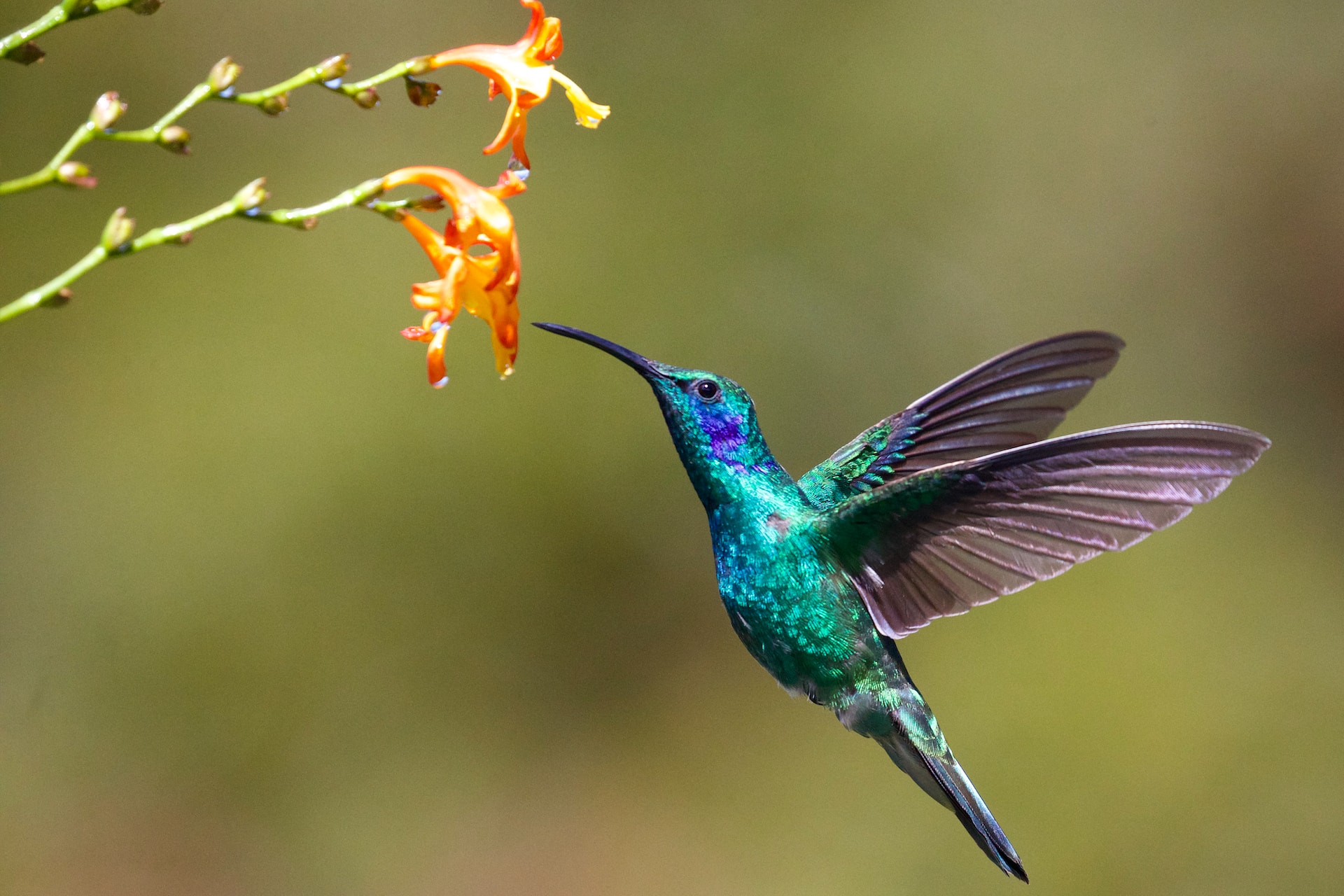Physical Characteristics and Abilities of Hummingbirds
If you have ever had the opportunity to observe a hummingbird, you’re likely captivated by their diminutive size and enchanting flight. Typically, these vibrant birds weigh less than a nickel, with most variants standing at just 7.5 – 13 cm long. Their iridescent plumage is not only brilliant, often shimmering in sunlight, but also provides excellent camouflage amidst foliage—a wonderful example of nature’s ingenuity!
Hummingbirds are unrivaled dynamos when it comes to their flight capabilities. As outlined by Birds and Blooms, these tiny fliers can clock impressive speeds reaching up to 34 mph and can flap their wings at around 70 times per second! When feeding, hummingbirds also exhibit their unique ability to hover stationary in the air—skill unequaled by any other bird species.
Intellectual Capabilities and Sensory Prowess of Hummingbirds
Although minuscule, hummingbirds possess a formidable brain that takes up about 4.2% of their total body weight. This remarkable cognitive power aids in remembering food sources and navigating extensive migratory routes. Furthermore, their acute sense of sight and taste is sharp enough to identify nectar-rich flowers and differentiate various sugar concentrations in nectar.
Communication between hummingbirds is characterized by an array of visual and auditory signals, ranging from elaborate displays to differentiated chirping. Interesting information about their pollination methods can be found on Nature’s Way Birds. Hummingbirds inadvertently contribute to pollination by picking up pollen grains on their beaks and transferring them to other flowers upon feedings.
Hummingbirds’ Lifespace and Reproduction
Hummingbirds have an average lifespan of 5 years, though some species can live up to a decade. Their reproduction process is no less remarkable. Female hummingbirds, from building the nest to incubation of eggs and feeding, undertake the entire responsibility of raising their young—a true testament to their resilience.
Furthermore, hummingbirds have an astonishing survival mechanism known as torpor, a state of reduced metabolic activity, which allows them to conserve energy during harsh weather or food scarcity. This state of near-hibernation makes hummingbirds one of few avian species that possess such evolutionary advantage.
Diet, Migration, and Global Presence of Hummingbirds
Hummingbirds have high-energy needs to fuel their rapid wing-flapping and hovering during feedings. They consume nectar from about 2,000 flowers each day alongside insects and spiders for proteins. Incredibly, they consume half their body weight in sugar daily!
Migratory patterns of hummingbirds extend thousands of miles, with the Ruby-throated hummingbird traveling an astonishing 500 miles over the Gulf of Mexico. Hummingbird Central provides intriguing details about these epic journeys. Although mostly found in Americas, hummingbirds have established their delightful presence around the globe, making them truly global avian ambassadors!
<small>Image source: https://unsplash.com/photos/hummingbird-near-flower-hjmED1qivmc </small>

